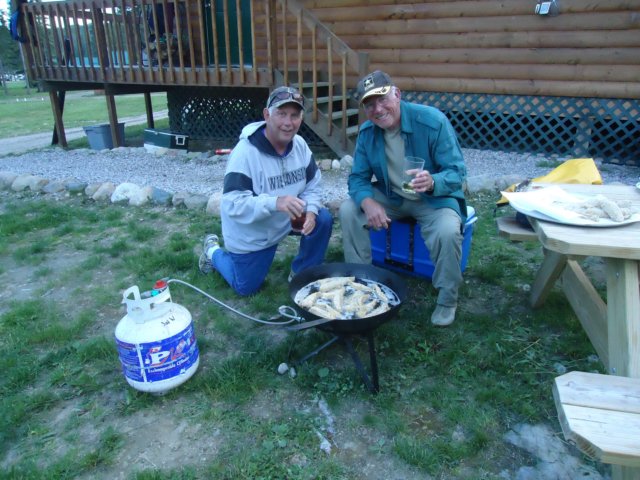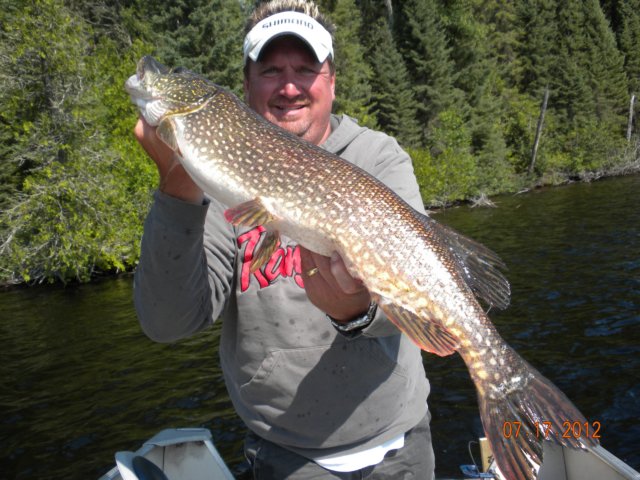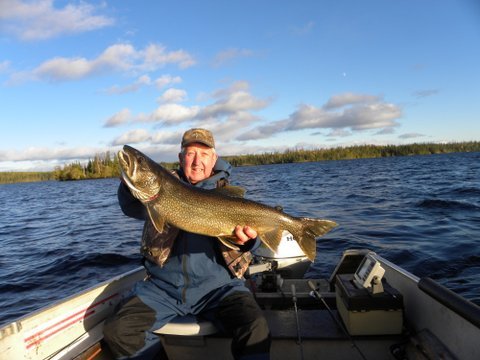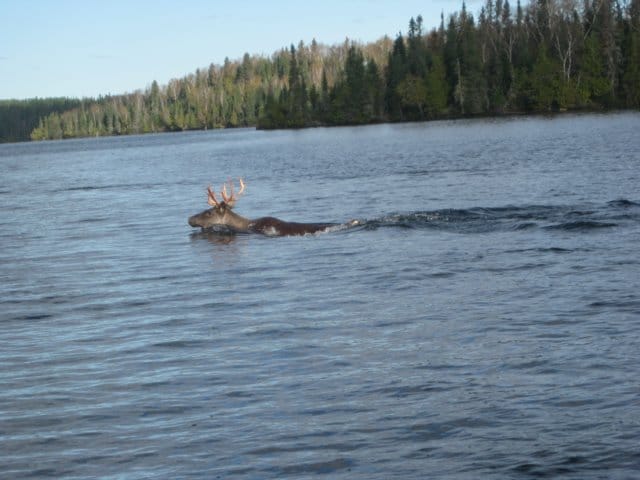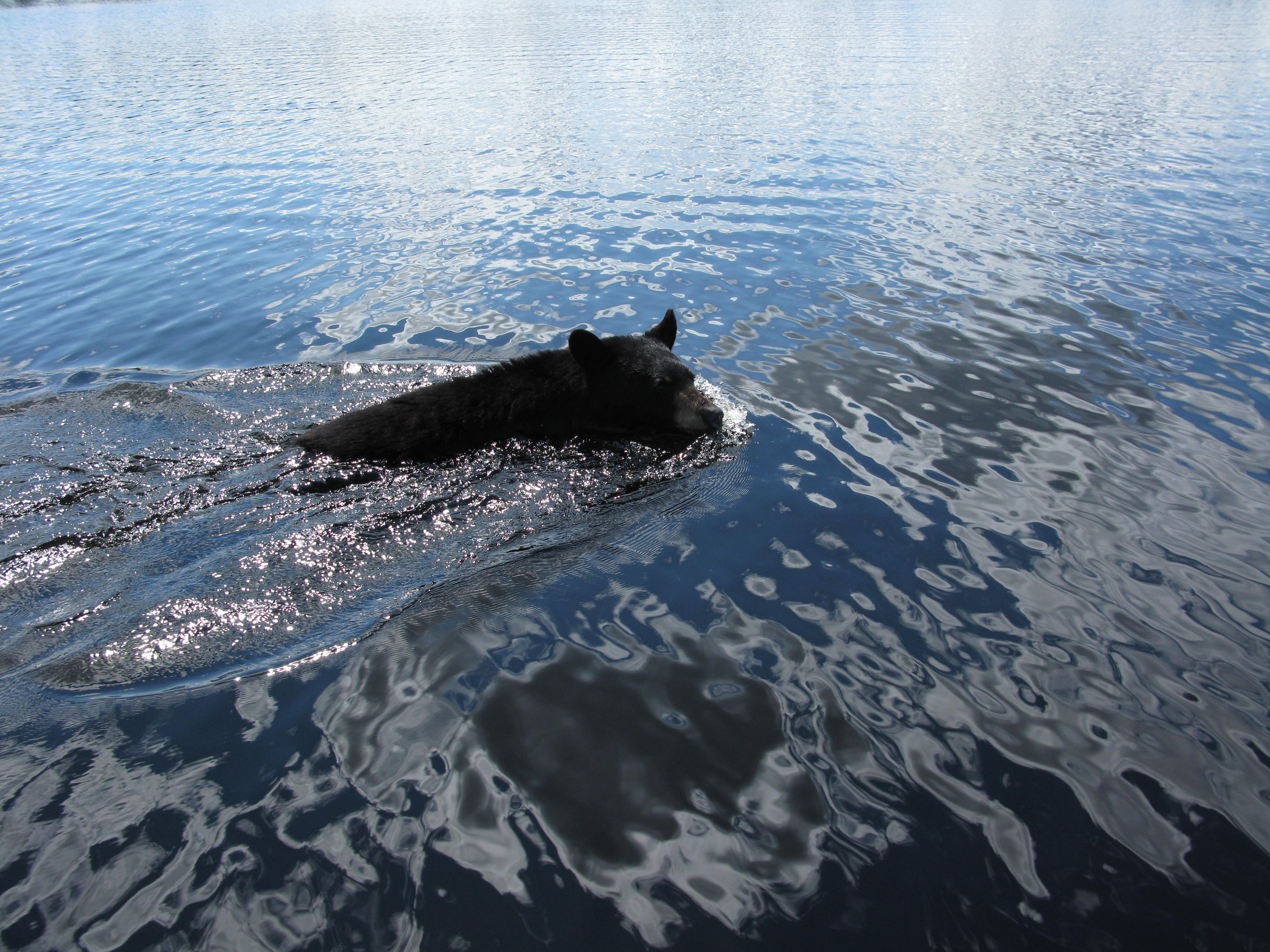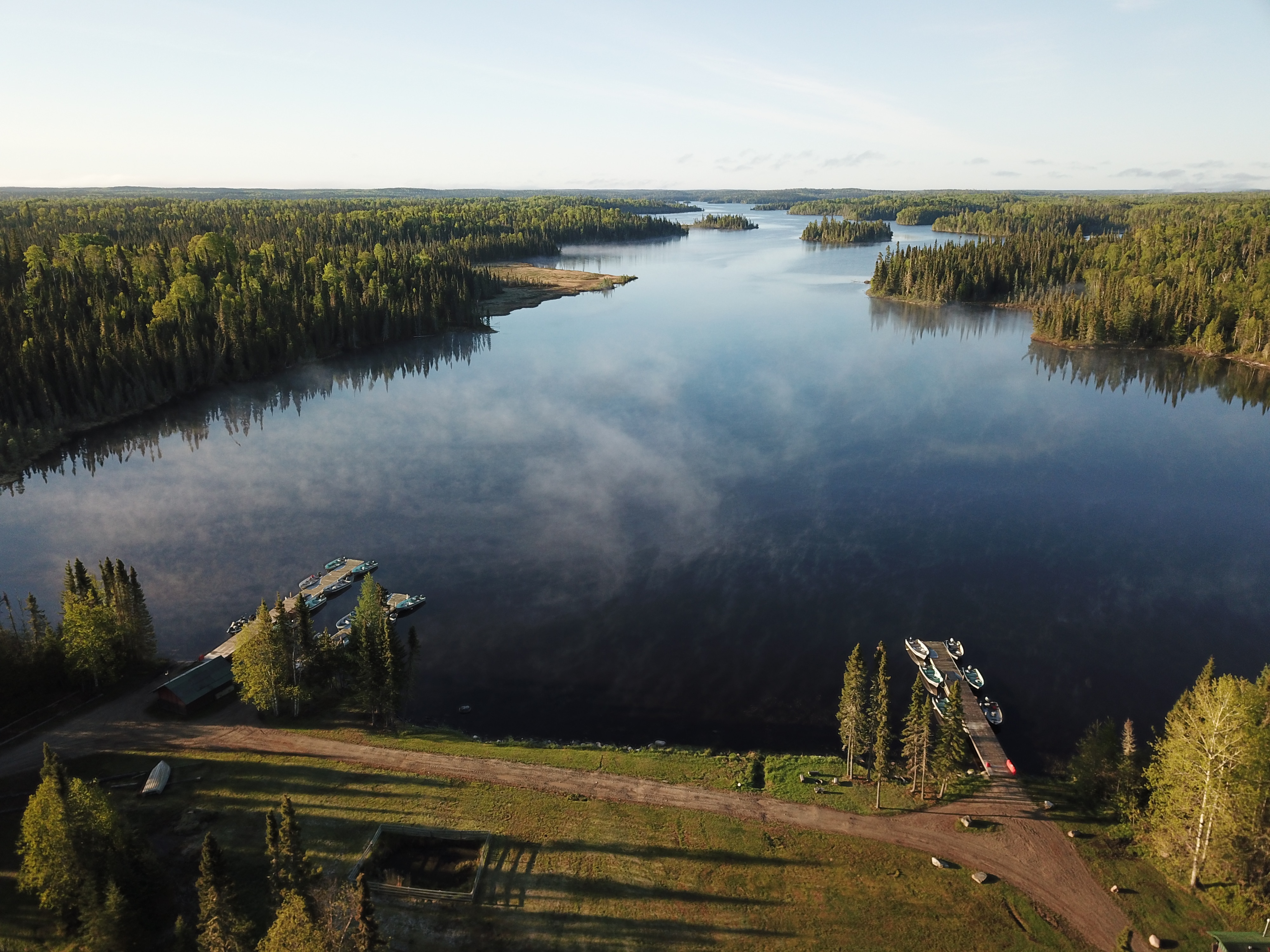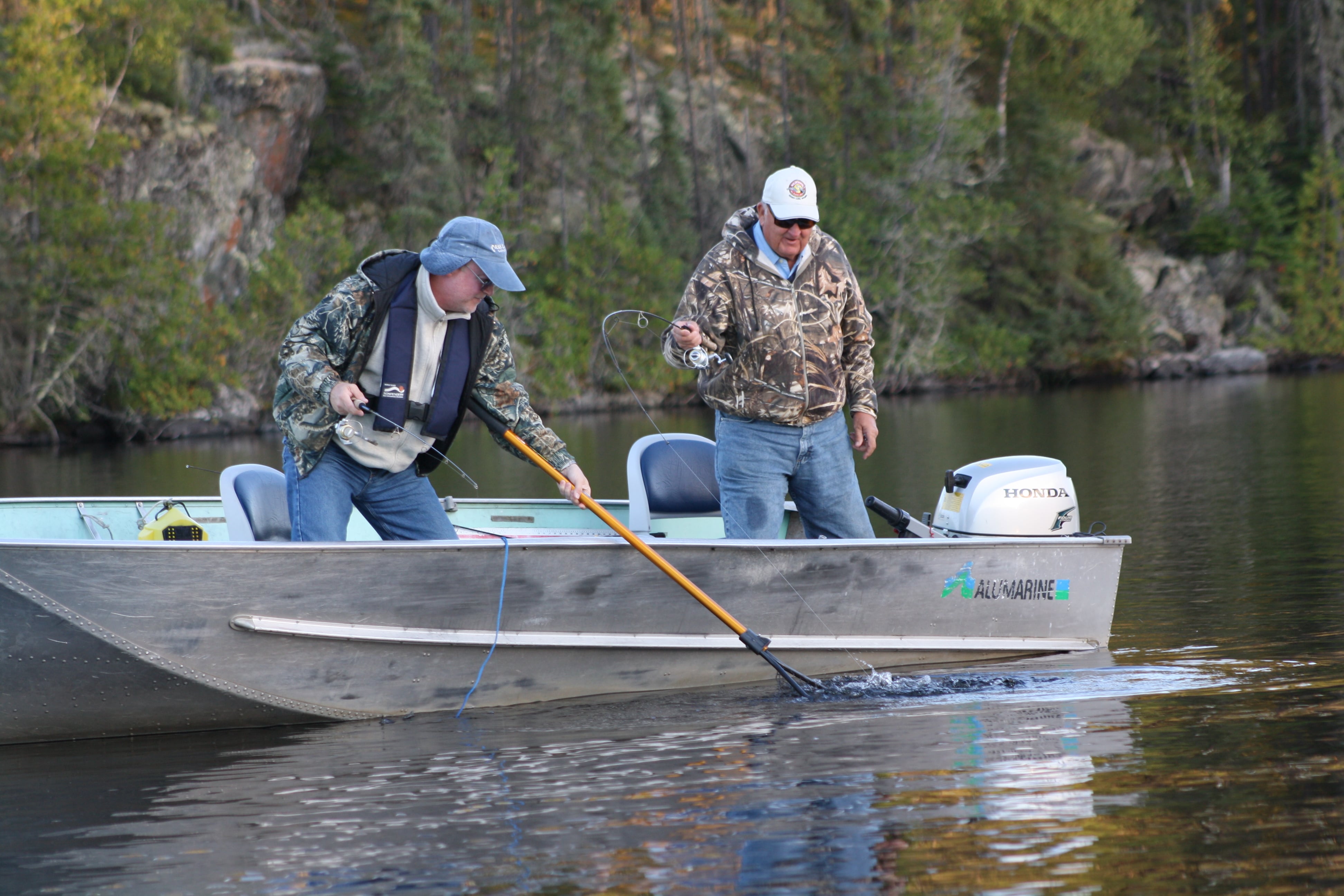Catch & Release
No body of water has an infinite supply of fish. Even under the best conditions, only a few fish will grow to adulthood out of the hatching of eggs from one parent. Sometimes none survive.
The best way to protect a fishery, and to provide an abundant fishery for the future, is to selectively harvest smaller fish. For instance, in Northeastern Ontario, rock bass, sunfish, and yellow perch are more abundant than walleye or bass. Make it a practice to keep some of these panfish, instead of holding your limit of the less abundant game fish. Catch and release is growing in popularity, and many studies have proven that this philosophy results in more and larger fish in lakes, in spite of 25 years of the advanced fishing technologies now used by anglers. The catch and release concept is simple. You can learn how to quickly and carefully return large, mature fish to the water so they can spawn again, and be caught again.
Closed season and size limits:
If you catch fish during closed season in Ontario, you must release them right away. Fish of a certain size, which may not be kept legally, must be released promptly and alive.
Developing proficiency at catch and release:
If you release fish promptly and carefully, you insure the best chance of survival. Read on:
Reduce Fight Time:
If you can land a fish quickly, it has the best chance for survival because a fish that struggles long builds up harmful waste products in its blood that may cause a longer recovery time after release. The right gear and technique will limit fighting time.
Tackle weight:
If you’re going for muskie or pike, you don’t want an ultra-light outfit geared for brook trout, so match your rod, reel and line accordingly.
Lures:
Reduce the chance for fish injury by carefully selecting your lures. The best lures for fish survival after live release are usually artificial lures, which typically hook in the mouth rather than throat or gills. Less injury means greater chance for survival upon release.
Hooks:
Consider replacing treble hooks with single hooks. Try filing down the barbs or pinching them closed with pliers, or just use barbless hooks. These techniques cause less damage to the fish and make hook removal easier.
Net:
Use a good net made of coated or rubberized mesh to reduce injury to eyes, fins, and gills.
Live bait technique:
If the fish swallows the bait, it will be more difficult to remove the hook quickly and safely. By setting the hook soon after the strike, it will be less likely that the fish will swallow the bait.
Jigging technique:
Keep a slight tension on the line when jigging. Often times a strike will occur while the lure is being dropped to the bottom, not when it’s being lifted. This jigging technique will help prevent the fish from swallowing the jig.
Pulling technique:
When fighting a large fish, pull when it DOESN’T pull, not when it is pulling against you.
Always Handle Fish With Care
Return fish to the water as soon as possible so they can get the oxygen they need. If a fish must be removed from the water, don’t drop it, but place it gently back into the water. The delicate slime coating on the fish helps protect it from disease, and allowing a fish to thrash about in a boat or on shore could seriously injure the fish. Never hold fish by the eyes or gills to avoid serious or fatal injury. If you must grab the body, make sure your hands are wet and you hold it without squeezing. By placing your wet hand firmly over the gill covers and the top of the head, you should get a good grip. Gripping most panfish, smallmouth bass and largemouth bass by the lower jaw and lifting them vertically will temporarily paralyze the fish. Support bigger bass under the stomach when holding them so they won’t become injured.
Hold small-to-medium sized walleye, northern pike and muskie behind the head with one hand and slightly in front of the tail with your other hand. Trophy fish (large fish) need special handling techniques to secure them properly. For large walleye, pike, muskie and most trout or salmon, a wet cotton glove or custom landing glove may be helpful as you hold near the tail. Hold the fish with one hand around the area in front of their tail, and place your other hand under the belly. A stringer or live basket will stress fish and compromises their survival after release. It is best to release fish as soon as possible. Note that fish kept on a stringer or in a live well that are not immediately released will count toward your daily catch and possession limit. If you must use a live well to hold fish for a short while, be careful to maintain a good water level, aeration and temperature. A healthy temperature can be achieved with a bit of ice and should be about 10 degrees colder than the lake’s surface temperature. Fish stress may also be reduced by adding non-iodized salt to the live well at a mix of 1/3 cup (78 ml) per five gallons (23 liters) of water.
Remove the hook safely:
There is an effective technique for removing hooks. If possible, hold the fish in a bit of water, using a net. Using a pair of long-nose fishing pliers or a surgical hemostat, grab and twist the hook quickly. Grasp the hook near its bend and apply pressure to back the hook out, opposite the direction it entered. When necessary, you may have to snip a line or hook that is impossible to remove – but never tear the hook out of the fish. If a fish is deeply hooked, don’t even try working the hook out. Just cut the hook or line to avoid injuring the fish even more. A hook left in a fish will, over time, be decomposed by digestive juices.
Pay attention to the condition of the fish:
Do not release severely injured fish. Pay attention to the condition of the fish because your fish will probably die if you return it to the water if it is limp or listless, has cloudy eyes, faded gills, or is bleeding from the gills or throat. Be gentle and return it to the water carefully to avoid further injury.
A fish must be able to swim normally before returning it to the water. Make sure its gill covers are moving and that it can hold itself upright. You may need to hold the fish upright in a swimming position and move it slowly back and forth so water runs through its gills and the fish gets oxygen.
Don’t rush! Release the fish when it recovers and begins to move briskly, even if it takes a few minutes.
Deeper water is of concern:
Decompression, similar to a scuba diver, can be an issue if you are fishing more than 30 ft. or 10 meters. Some cold-water species like lake trout can usually adjust to changes in water pressure when pulled from any depth, in any season. However, sometimes these fish will experience expansion of their air bladders that could cause death. Warm-water species do not have the ability to equalize pressure, so pike and walleye should be brought to the surface slowly to adjust to pressure changes, then released immediately. A technique to release fish caught in deep water is to slip it out of your wet hands, head first into the water, which will push oxygen through its gills on re-entry to the water.
Have your camera ready!
The goal is to get that trophy fish back into the water as soon as possible, so have your camera ready. The best pose is to hold the fish horizontally, supporting its weight with both hands. Angler and fish should face the sun so the camera can face away from the sun. Never hold a fish vertically if you are planning to release it. Wildewood strongly suggests catch and release. We recommend having fish replicas made to memorialize your trophy catch, and we can also arrange for your trophy mounting needs. We thank you for protecting our trophy walleye, lake trout and northern pike for the future.
Ontario trophy management policy:
Only one trophy fish per species (walleye, northern pike, and trophy lake trout) permitted (all lakes). However, there are different limits of smaller fish allowed for eating and taking home. For Ontario Ministry of Natural Resources (MNR) regulations, click on http://www.mnr.gov.on.ca








